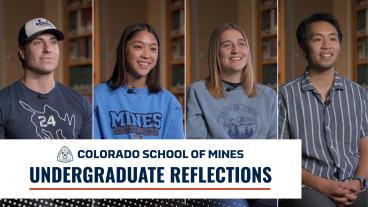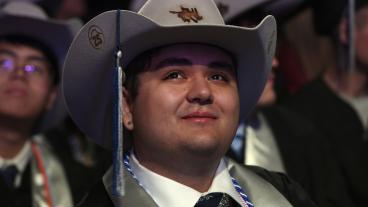Eleven students are part of a humanitarian engineering course that is designing plans to relocate a village displaced by mining operations in the Democratic Republic of the Congo in Africa. The course “Projects for People,” taught by corporate social responsibility and Human Centered Design professor Benjamin Teschner, is geared toward students interested in the social challenges associated with the extractive industries and how engineering helps address these problems.
During the first class, Teschner gave each student $20 to design a prototype that would act as a tool to explain to someone living in the village how their lives would change after relocating.
“Commonly, students think of prototypes only as something they build to test their idea or to help themselves as engineers refine a design. What this assignment does is force them to think about how to design a prototype that will show someone else how their idea works so they can engage non-engineers in their design process,” Teschner said. “Students will immediately lay their assumptions about the problem out on the table for everyone to see—assumptions that they didn’t even know they were making.”
Aina Abiina is one of two graduate students in the class. The course is not required for Abiina’s Liberal Arts and International Studies degree, however she chose to enroll because she wanted to learn about the interaction between multi-national companies and people that are affected by these companies’ activities.
“In order to minimize a negative impact on the environment of those people and to optimize the production of the mine, a proper assessment is needed,” said Abiina. “Designing solutions to this complex engineering and social challenge will help students gain valuable skills in human-centered design methods, research techniques, brainstorming tools and approaches.”
Over the next few months, teams in two groups will have three phase gate reviews that will explore problem definition, design exploration and design analysis. The unique thing about this course is that the grades and passage of the phase gates are not linked. Grades are determined instead by how the team works within these phase gates.
“I hope students are able to develop empathy for people who use the things they design and that they recognize by bringing these people into the design process, they can create better, more sustainable engineering outcomes,” Teschner said.
Chemical and Biochemical Engineering student Karyn Burry hopes to end the course with better design flow skills.
“I am a super organized person and that usually is really helpful in a group, but this class is pushing me out of the organizer position into a position where I am forced to think outside the box in attempt to find a solution to this relocation project,” Burry said.
To better understand the village and relocation process, students are working with Thabani Mlilo, manager of sustainability for the America region at AngloGold Ashanti, who is acting as the ‘client’ on the project. Mlilo’s goal is to catalyze a paradigm shift early enough in an engineer’s education so that it is “part of their DNA” and a natural part of how they approach problems or solutions wherever there is a sustainability aspect to their work.
“In the sustainability field, one of the biggest challenges we have is shifting the paradigm of professionals in technical and scientific disciplines to the changing landscape of the business-society interface,” Mlilo said. “My impression of Mines students is that they don’t shy away from a challenge and are not afraid of treading unknown waters.”
For questions about the course, please contact Benjamin Teschner at bteschne@mines.edu.
Contact:
Kathleen Morton, Communications Coordinator / 303-273-3088 / kmorton@mines.edu
Karen Gilbert, Director of Public Relations / 303-273-3541 / kgilbert@mines.edu



